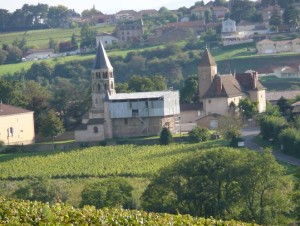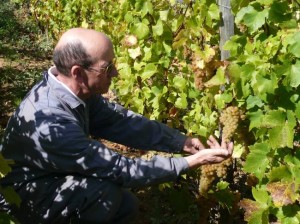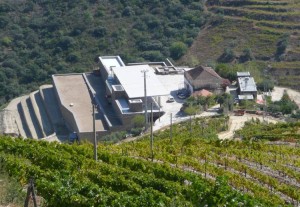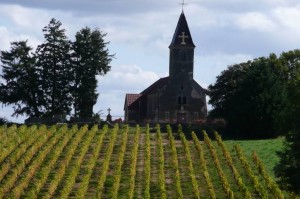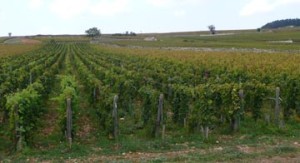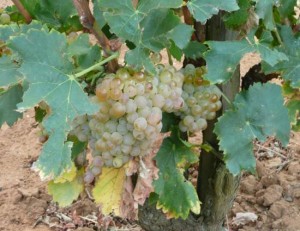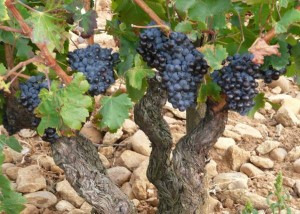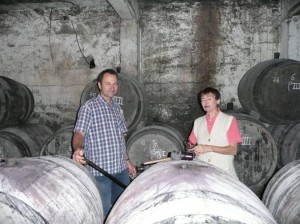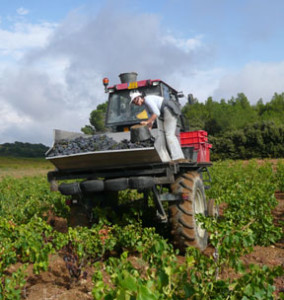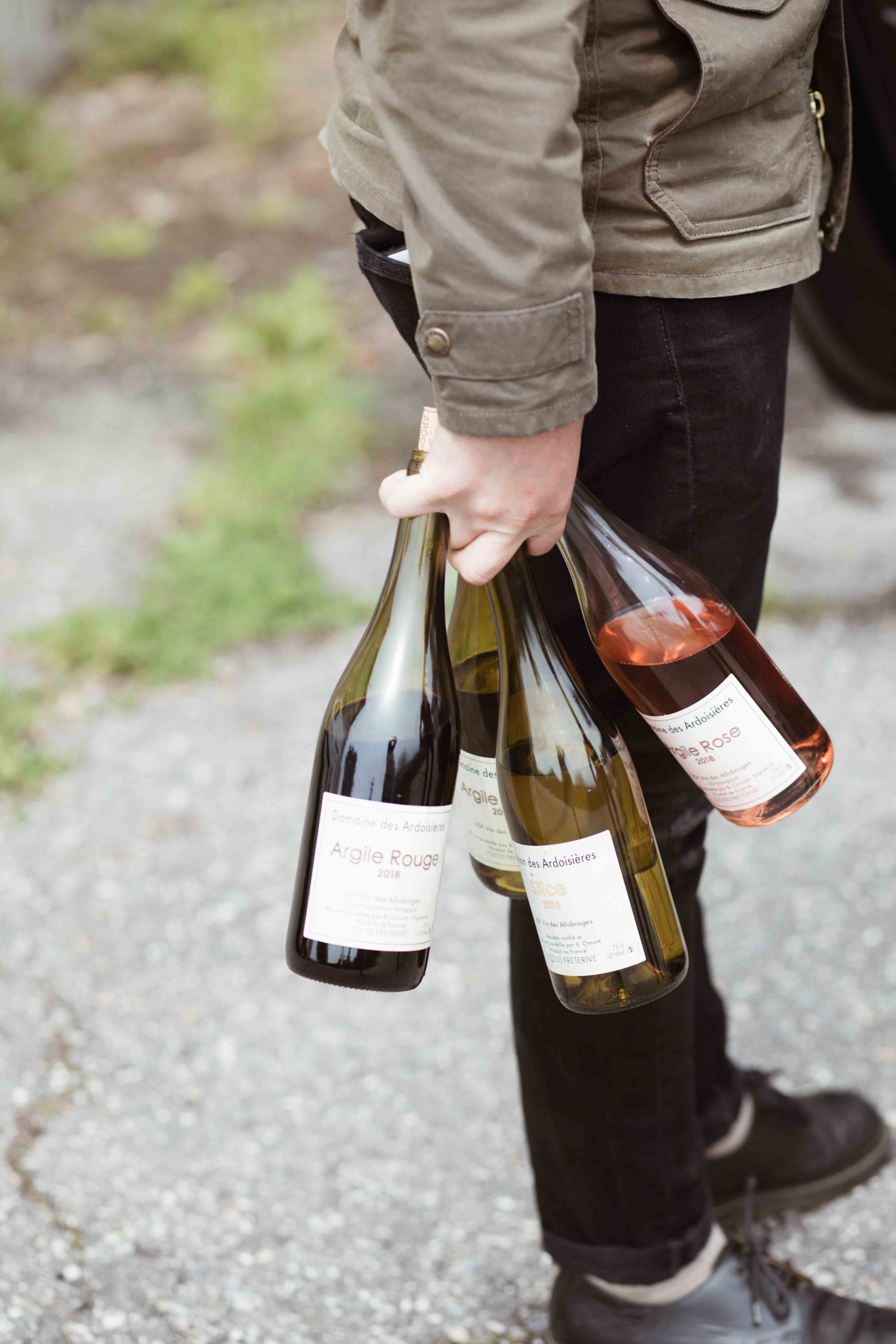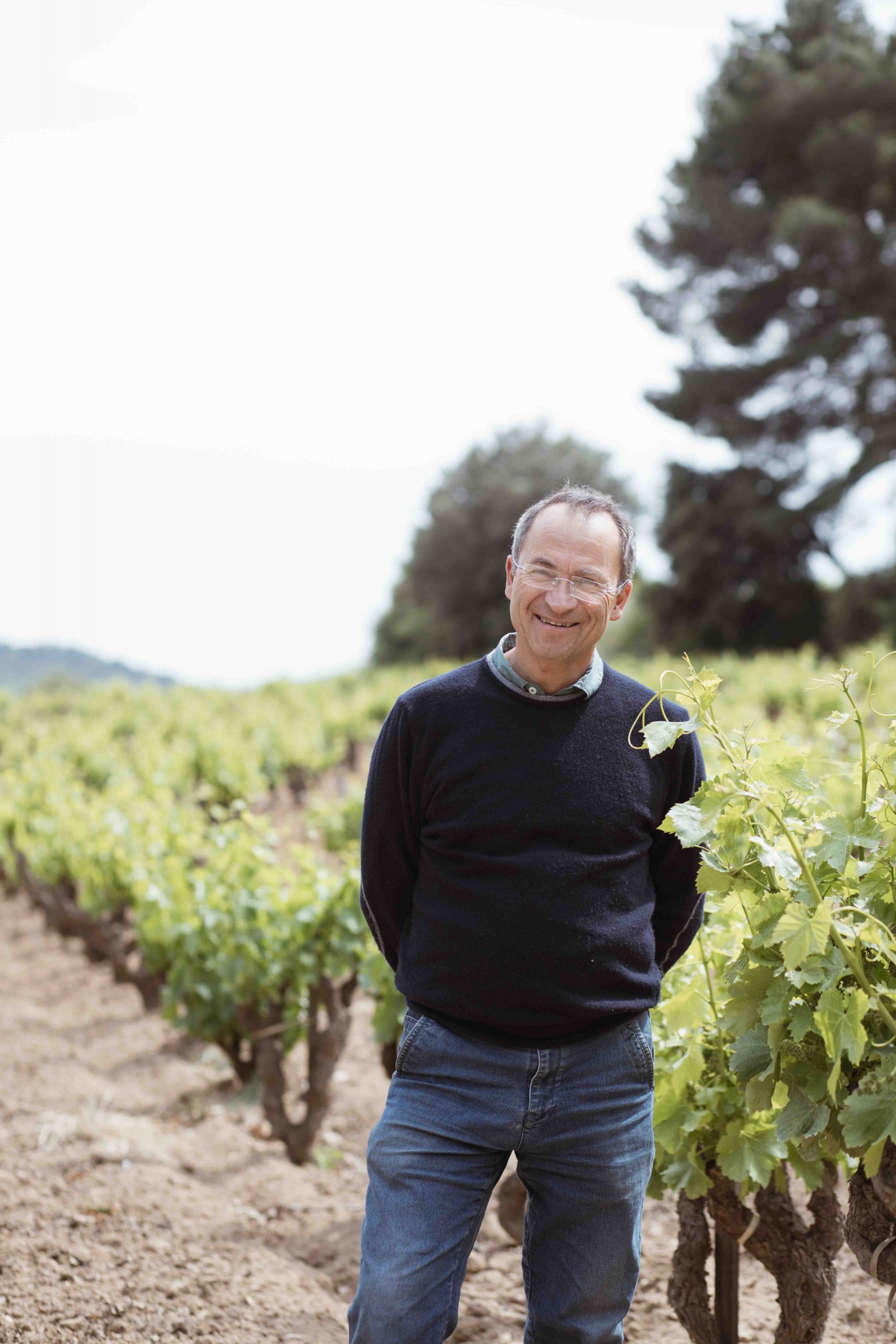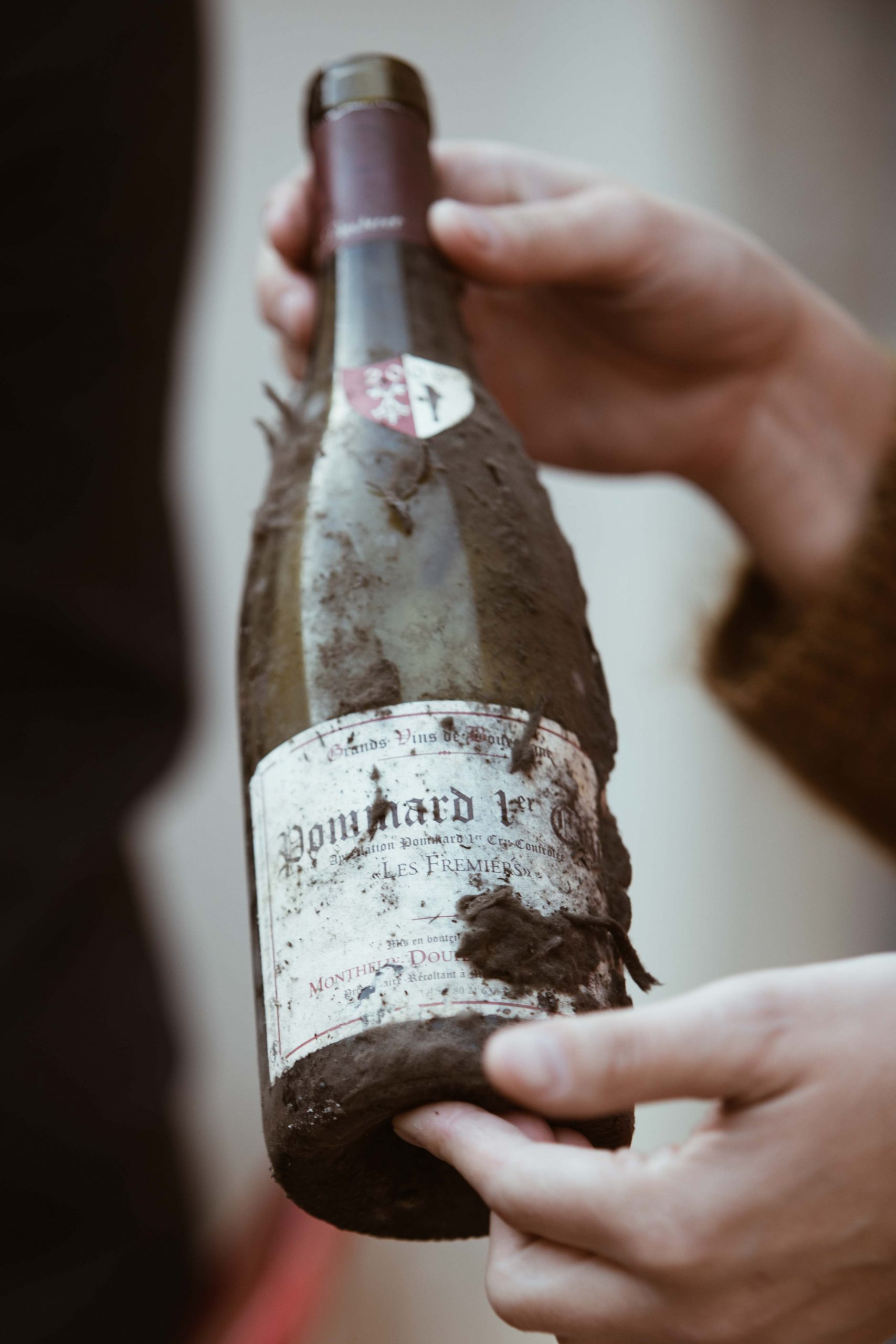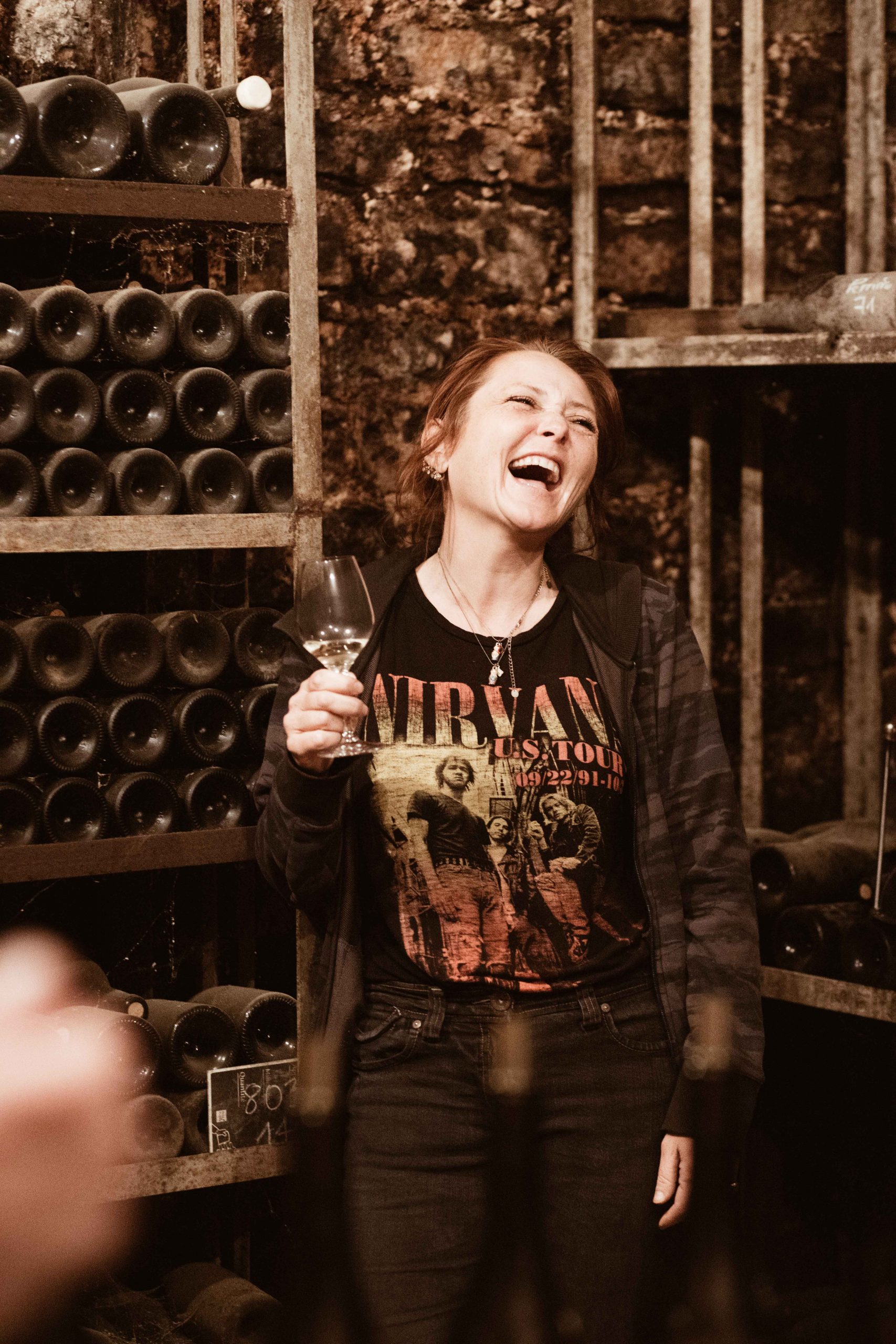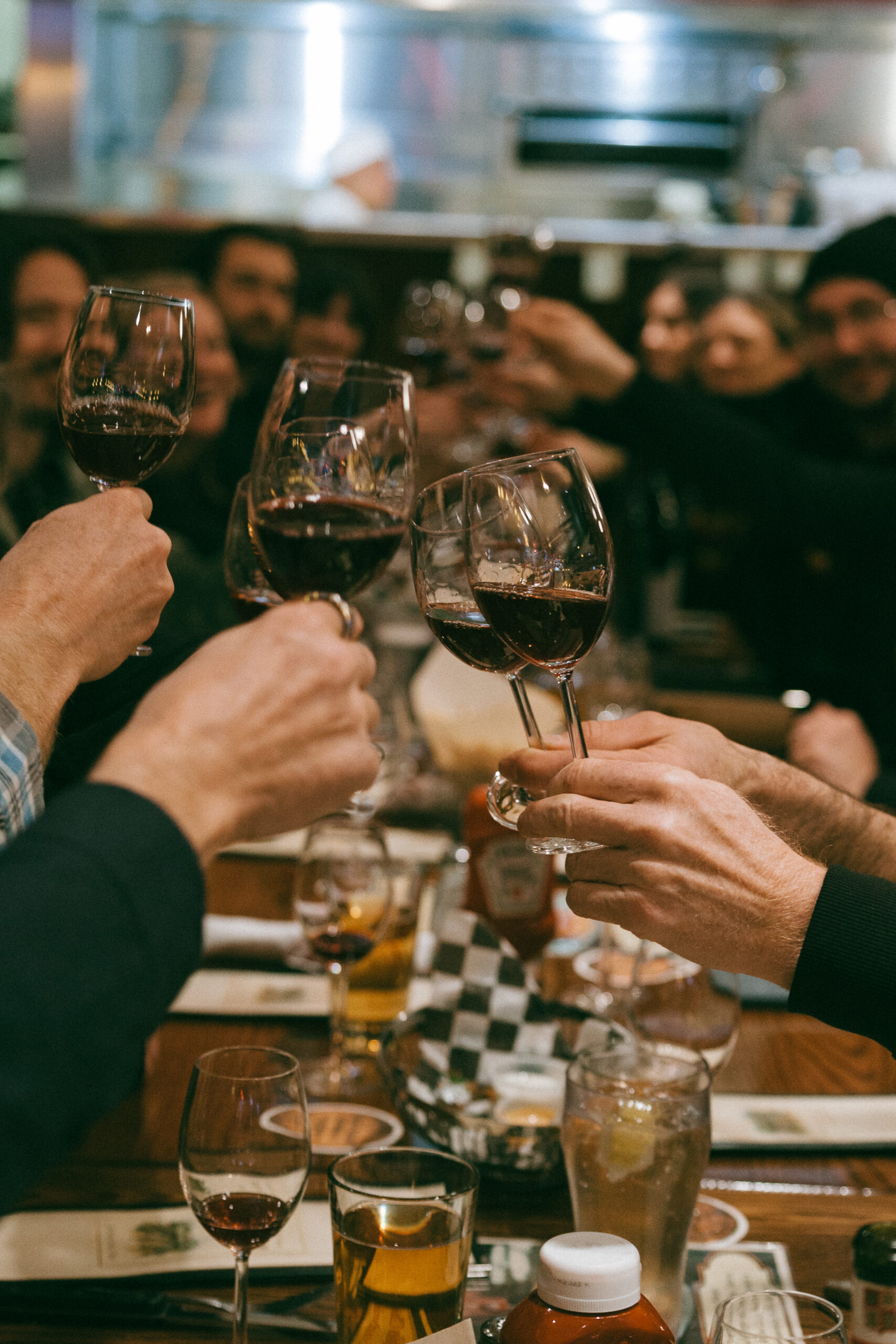There is a saying in Burgundy “Septembre fait le vin,” September makes the wine. It applied in 1978 when the entire summer was overcast with cool temperatures, and by the end of August, the grapes looked like little green English peas. This year, as the growers came back from their short vacation in anticipation of an early harvest, they were depressed, totally undone, almost desperate. The weather had been cool, grey, and rainy with a low of 10° C and a high of 15° C.
After a very hot April with August temperatures which advanced blooming by a month, the growers were planning the harvest between mid-August and early September. The “ban des vendanges” was declared as August 15th, giving the growers a larger margin of time. As Lalou Bize-Leroy said, “This is the year where micro-climates have to be taken seriously.”
Beginning August 25th, the weather warmed up and the sun finally came out. Temperatures rose to 25°-30° C. The grapes started turning red immediately and the sugar content rose simultaneously. My first visit on September 2nd was to Dominique Cornin in Chaintré, who
could see the positive results of his 4 years of biodynamic farming paying off. His grapes were golden and sweet, with a sugar level between 11.5° and 12.5°, as well as good acidity. The soil was turned over at the foot of each vine and grass grew in the middle of the row, absorbing the excess moisture. Of course, each vineyard was harvested according to its degree of ripeness. As for Jean Thévenet of
Viré-Clessé, he was, as usual, waiting another couple of weeks to harvest, taking a chance with the weather, but trusting that the sugar would continue to concentrate.
Going to Côtes de Nuits, Arnaud Mortet began harvest September 1st and has left his Gevrey Lavaux St Jacques for Saturday the 8th. In looking at his vineyard, he had removed extra leaves to allow the bunches to ripen. The old vines had a lot of millerandage, tough skin, and were very dark in color. Some vines had mildew, some didn’t, but since he was using a sorting out table with 1/3 of his crew handpicking each grape, there is every chance that the result will be very positive. Emmanuel Rouget also finished his harvest September 5th.
By September 6th, Lalou Bize-Leroy had harvested all of her reds, and some of her whites, with the exception of Meursault and Auxey-Duresses. Christophe Perrot-Minot had left his Grands Crus for the end of that week and also had a second sorting out table so as not to miss any defective bunches. In Côtes de Beaune, Sébastien Gay in Chorey-les-Beaune finished harvesting September 6th, Claude Chevalier in Ladoix was waiting to harvest his whites until later, and Nicolas Rossignol in Volnay had also finished his harvest and was very excited about the 2007 vintage.
After my visit to the Douro Valley and Dirk Niepoort’s stunning new winery, I came back to Burgundy and drove to Meursault and Chassagne-Montrachet under perfect summer weather. Everyone had big smiles on their faces. They were waiting for more ripening, and rightly so. In Meursault, François Jobard and son Antoine picked from September 4th until September 11th, finishing with Puligny Trezin. There was no mildew. François reminded me that he never uses weed killers and had cut the grass between rows a week before harvest. The alcohol varied between 12.2° and 12.6°. Small bunches with a tough skin will result in a smaller quantity, but better quality, with a lot of aromas, high acidity and a lot of malic acid. His first fermentation started naturally on the 4th day with no addition of commercial yeast.
Michel Morey-Coffinet and son Thibault in Chassagne were busy emptying fermenting tanks and transferring to barrels. They started their Pinot Noir on September 6th. Their Clos St. Jean was mixed with mildew, while their Morgeot was a lot healthier. They claim to have lost close to 20% of their yield after sorting out the grapes.
Meanwhile, I called Jean Thévenet, who was waiting another week or so to harvest, believing in his lucky star. He started harvest on September 17th. On September 25th, with warm, sunny fall weather, Jean took me to his Bongran vineyard. The grapes looked great, with a tough skin and less juice, but the quality is there.
On Monday, September 24th, I went back to Domaine Leroy. Lalou had already transferred her wines into new barrels. This year, however, there is no François Frères “Allier,” but instead Cadus “Tronçais.” The quality of the wood was impressive. She offered to taste a couple of appellations. The new wines tasted so good “for their age” that we went from Nuits les Boudots to Corton, Clos de la Roche, Musigny and finally Richebourg. There were fantastic floral aromas, a great purity of fruit, amazing color and soft tannins. She produced 17 more barrels than in ’06! She claims she had almost no mildew. Her Corton-Charlemagne was harvested on the 19th.
For years, winemakers were embarrassed by the appearance of her vineyards. A couple of them, one being Nicolas Rossignol, whose Volnay Santenots is below hers, told me that her Santenots du Milieu was looking fantastic. André Porcheret made the same remark; so,
Lalou and I drove to her Volnay Santenots and then to her Meursault Narvaux. They were in excellent condition! I had to take a picture.
Lalou explained that 20 years ago, her late biodynamic consultant, François Bouché, had advised her to replant her sickly looking Volnay Santenots vineyard. She refused and decided to give it a chance. In fact, she also claimed that her Romanée St. Vivant was almost as bad! She is quite pleased with the result now. But, 20 years is what it took! Bravo!
After consulting with Emmanuel and Françoise Reynaud, I was driving to Château Rayas on Sunday the 15th in order to harvest the Grenache blanc on Monday. The next morning the harvest was postponed as it was raining to everybody’s delight. Châteauneuf, like the rest of the Rhône Valley, had had a very dry summer. Not a drop of rain. Monday night, a storm brought 13mm of rain in Châteauneuf and 18mm at Château de Fonsalette. Emmanuel postponed again, not worrying about mildew since the Mistral would dry the grapes, which it did. Since we were not
harvesting, Françoise and I walked to the vineyard of Laurence Féraud, next to Rayas and behind Château de Vaudieu. She was on the tractor sorting out grapes, quite pleased with the rain and the ripeness, but she was saving her best vineyards for last and harvested over 22 days until September 28th. Finally, the next morning, we went and cut some Grenache blanc at Rayas. The bunches were beautiful and I nibbled here and there to taste their sweetness.
Emmanuel was determined to wait longer for his red Grenache and started to pick Syrah and Cinsault, and lastly the Grenache at Fonsalette. Challenging the weather report, he was determined to wait another ten days for his Rayas Grenache and had been picking grapes the first week of October until the 10th. He informed me that Grenache always takes longer to ripen. Laurence and Emmanuel both agreed that we were on the way to a great vintage. The way they talked about the quality of their harvest was like listening to new parents at the birth of their first child! Just as in Burgundy, they were concerned about the ripeness due to the drought and the lack of sun. There was no vegetable garden at Rayas this year….The trees are dying and it was a very serious concern for everyone.
Going up to Tain l’Hermitage, Gilles Robin also complained at first of the cool summer, but September was glorious and he harvested as late as the last week of September. Gilles was quite pleased. Bernard Burgaud, who had a scare with a hale storm in June, fortunately was not affected on his side of the mountain where his vineyard is located. Again, he was pleased with the result. Good vintage, but not as outstanding as Châteauneuf-du-Pape.
It is very apparent that in 2007, the cool summer affected everyone and “September made the wine.” Micro-climates came into play and the savvy winemaker had to carefully determine the date of harvest. A gamble for sure, but it worked.
Following are additional remarks about the vintage:
Young vines are more susceptible to mildew. Older vines have a lot of millerandage, meaning very small bunches with little juice but great concentration. Good vineyard management is the key to quality. For Burgundy, there will be a decrease in production of 15% – 20% from 2006. I predict that this vintage will produce some exceptional wines. This is the year when the serious, talented winemaker will make a difference.

